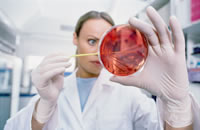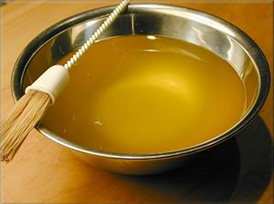Stem cells in search of truth
 Stem cells. Despite the fact that the term appeared in biology in 1908, the peak of world attention to this topic came at the end of the 20th and the beginning of the 21st centuries. Publications regularly appear in a wide variety of newspapers and magazines – from popular science to tabloids. And the tone of these publications is very diverse – from the most enthusiastic to the angry and revealing.
Stem cells. Despite the fact that the term appeared in biology in 1908, the peak of world attention to this topic came at the end of the 20th and the beginning of the 21st centuries. Publications regularly appear in a wide variety of newspapers and magazines – from popular science to tabloids. And the tone of these publications is very diverse – from the most enthusiastic to the angry and revealing.
On the one hand, in 1999, the respected scientific journal Science declares stem cells to be one of the greatest discoveries of the twentieth century.
On the other hand, the United Nations (with the filing of the United States) adopted a declaration on the general prohibition of any form of human cloning, including work on the study of embryonic stem cells. Extremely negative statements by highly respected scientists appear in the press, for example, such: “The stem cell history is a mythology that exists in parallel with medical medicine.”
Opinions are so diverse that the question arises – are they really talking about the same thing? Maybe just somewhere in the chain of information transfer failed? Maybe these stem cells are different? And some should be banned forever and ever, and others – be treated for all diseases at once?
Any web search engine on the phrase “stem cells” gives several hundred thousand results, including the most tempting offers of treatment with their help. And the prices for services vary from quite acceptable to comparable with the cost of a decent foreign cars.
The question of treatment is the most interesting, if only because it can directly concern any of us. The fact that stem cells promise is in demand right today, and will certainly be needed in the future – because no one is immune from illness or injury, and old age comes to absolutely everyone.
Cell therapy is not the discovery of the end of the 20th century. But it was precisely at this time that scientific work appeared, giving new wide possibilities for its application, and the rapid development of research in this area began – in particular, in terms of the use of stem cells.
The following properties of stem cells are of fundamental importance: they are unspecialized cells, they do not perform any “work”, they are capable of multiple divisions and — under certain conditions — specialized cells can develop from them.
Stem cells differ in their ability to divide and further specialization. The most universal in this regard are embryonic stem cells derived from a 4-5 day embryo. From them, with the help of complex and expensive manipulations, you can get the so-called “immortal” line – cells that can quickly divide an unlimited number of times while preserving their properties.
In clinical practice, they are not used, as many properties of embryonic stem cells have not yet been studied – in particular, their possible oncogenicity.
Therefore, if you are promised treatment with such cells, this is, to put it mildly, not true.
The next type of stem cells is the so-called fetal cells derived from abortive fetuses at 6-21 weeks of gestation. Work on their use is under even greater pressure – opponents of abortion are added to the opponents of stem cells.
Fetal cells have already begun to specialize, so they can only be divided a limited number of times, and they can not transform into all cells. Under certain conditions, and under proper control, the release of fetal cells is permitted in a number of countries, including Russia.
Cord blood stem cells are even more specialized. In the future (overwhelmingly), they can only be transformed into blood cells.
And, finally, – own, “autologous” stem cells. In an adult, they are present in the body in sufficient volume, ensuring the processes of self-healing (regeneration) of tissues and organs. Some of these cells can be isolated and new cells can be created for treatment.
Stem cells have also been treated for a long time and very much – in fact, the well-known method of treating certain cancers, blood diseases and autoimmune diseases using the bone marrow transplantation method is one of the types of cell therapy – stem cell transplant, in this case bone marrow.
To date, the safest (in all respects) is the treatment with its own stem cells. The best results can be given by an individually selected course of cell therapy.
In addition to traditional hematology and autoimmunology, cell therapy is effective for type 1 diabetes, various liver diseases, after stroke and heart attack, extensive burns, nonhealing wounds and ulcers. Cell technology has also been successfully applied in the treatment of joint diseases – since the early 1990s, transplantation of cartilage tissue progenitor cells has been used abroad.





